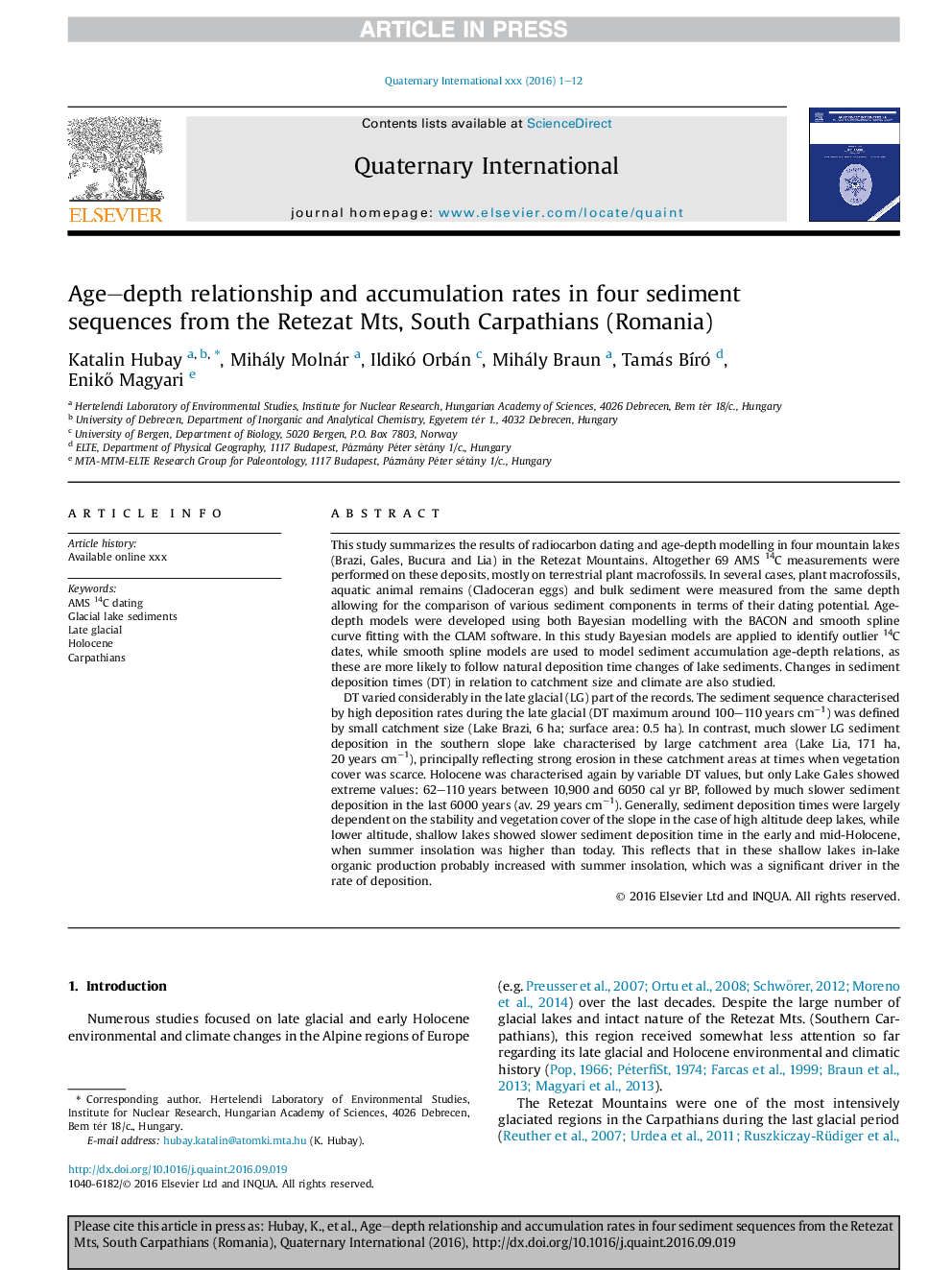| Article ID | Journal | Published Year | Pages | File Type |
|---|---|---|---|---|
| 7449516 | Quaternary International | 2018 | 12 Pages |
Abstract
DT varied considerably in the late glacial (LG) part of the records. The sediment sequence characterised by high deposition rates during the late glacial (DT maximum around 100-110 years cmâ1) was defined by small catchment size (Lake Brazi, 6 ha; surface area: 0.5 ha). In contrast, much slower LG sediment deposition in the southern slope lake characterised by large catchment area (Lake Lia, 171 ha, 20 years cmâ1), principally reflecting strong erosion in these catchment areas at times when vegetation cover was scarce. Holocene was characterised again by variable DT values, but only Lake Gales showed extreme values: 62-110 years between 10,900 and 6050 cal yr BP, followed by much slower sediment deposition in the last 6000 years (av. 29 years cmâ1). Generally, sediment deposition times were largely dependent on the stability and vegetation cover of the slope in the case of high altitude deep lakes, while lower altitude, shallow lakes showed slower sediment deposition time in the early and mid-Holocene, when summer insolation was higher than today. This reflects that in these shallow lakes in-lake organic production probably increased with summer insolation, which was a significant driver in the rate of deposition.
Related Topics
Physical Sciences and Engineering
Earth and Planetary Sciences
Geology
Authors
Katalin Hubay, Mihály Molnár, Ildikó Orbán, Mihály Braun, Tamás BÃró, EnikÅ Magyari,
